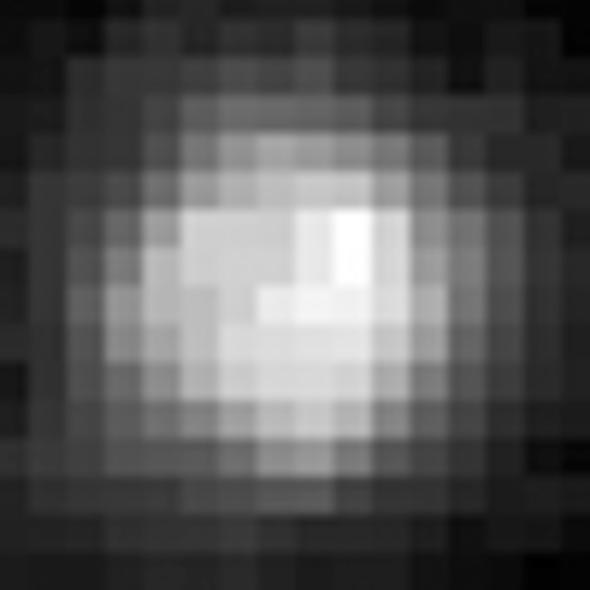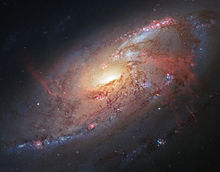If the Hubble telescope can take excellent pictures of stars and galaxies forming millions of light years away, why can't it take a good picture of Pluto?
1 Answer
The Hubble telescope has an angular resolution of
Explanation:
While researching this answer, I came across this article which provides a more in depth answer to the question.
Hubble uses a special type of camera called a CCD, or charged couple device. These cameras use a grid of "bins" which collect and count photons. These "bins" correspond to pixels in the resulting image. If we look at a Hubble image of Pluto from 1996, we can see these pixels.

Currently, Hubble's resolution is about
Pluto's angular size changes as it orbits the sun. The closer it is to the Earth, the larger it appears. At its closest, Pluto is
This is the angular size in radians. If we convert to arc-seconds, we get;
Which is about


